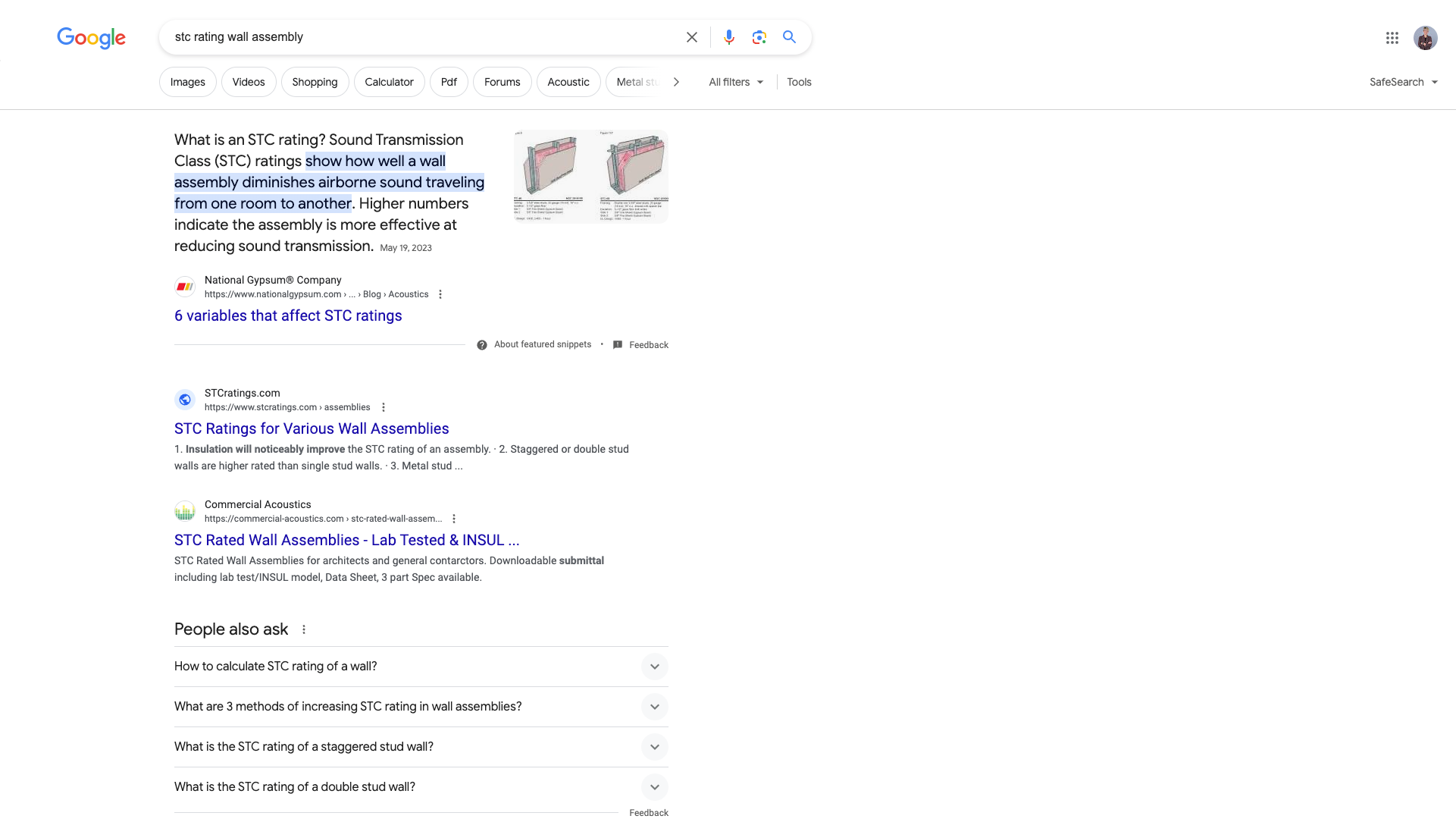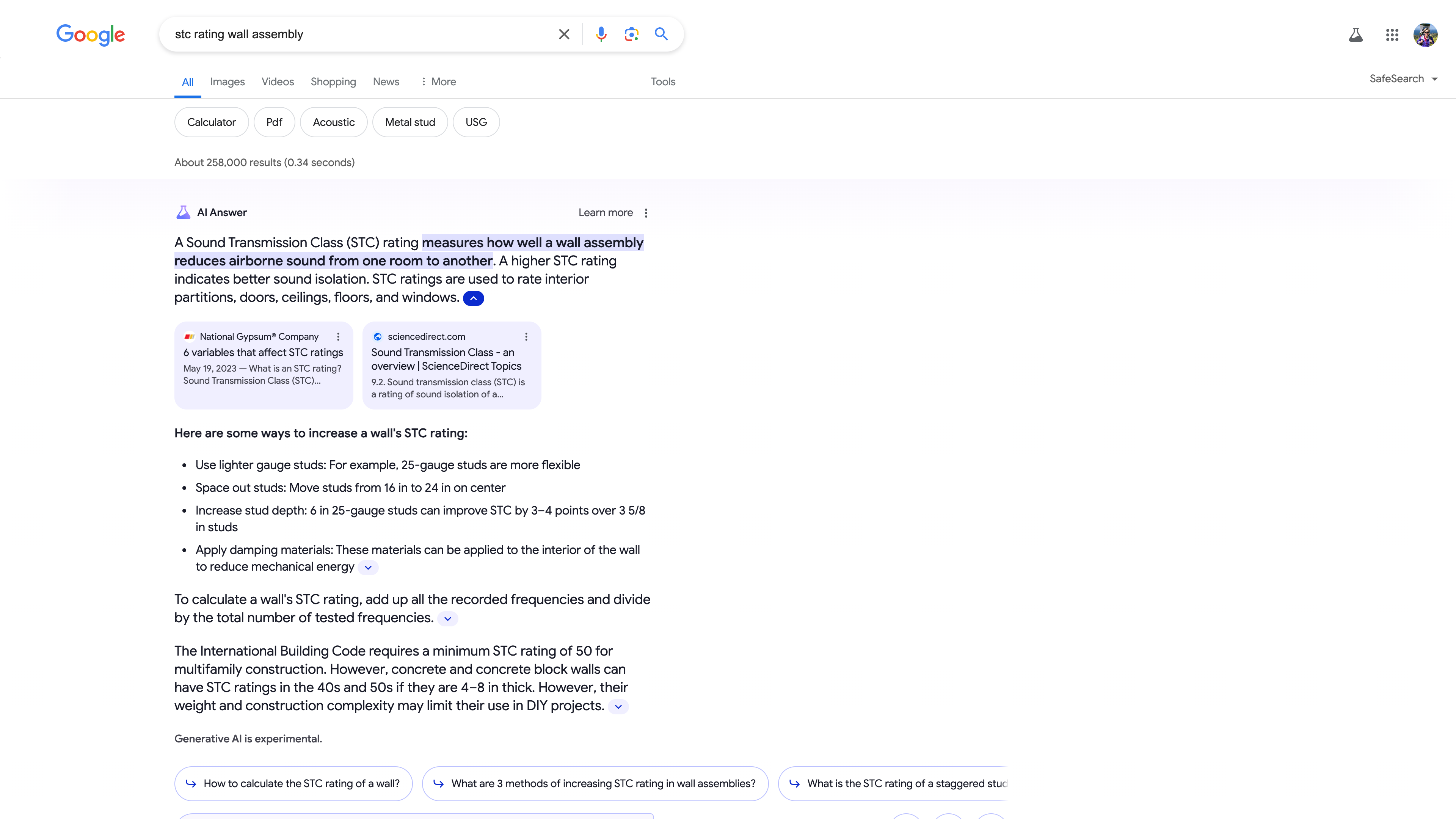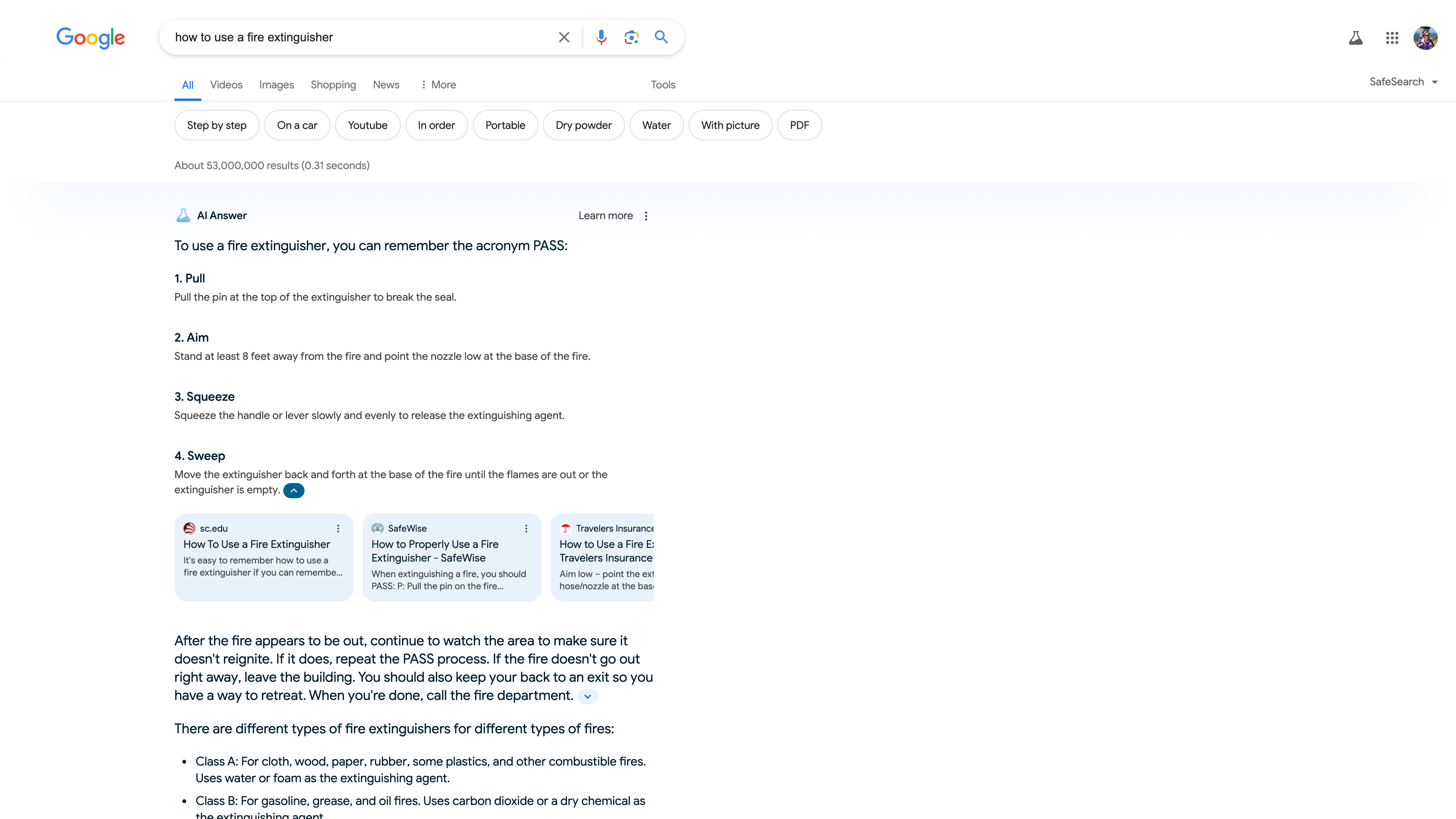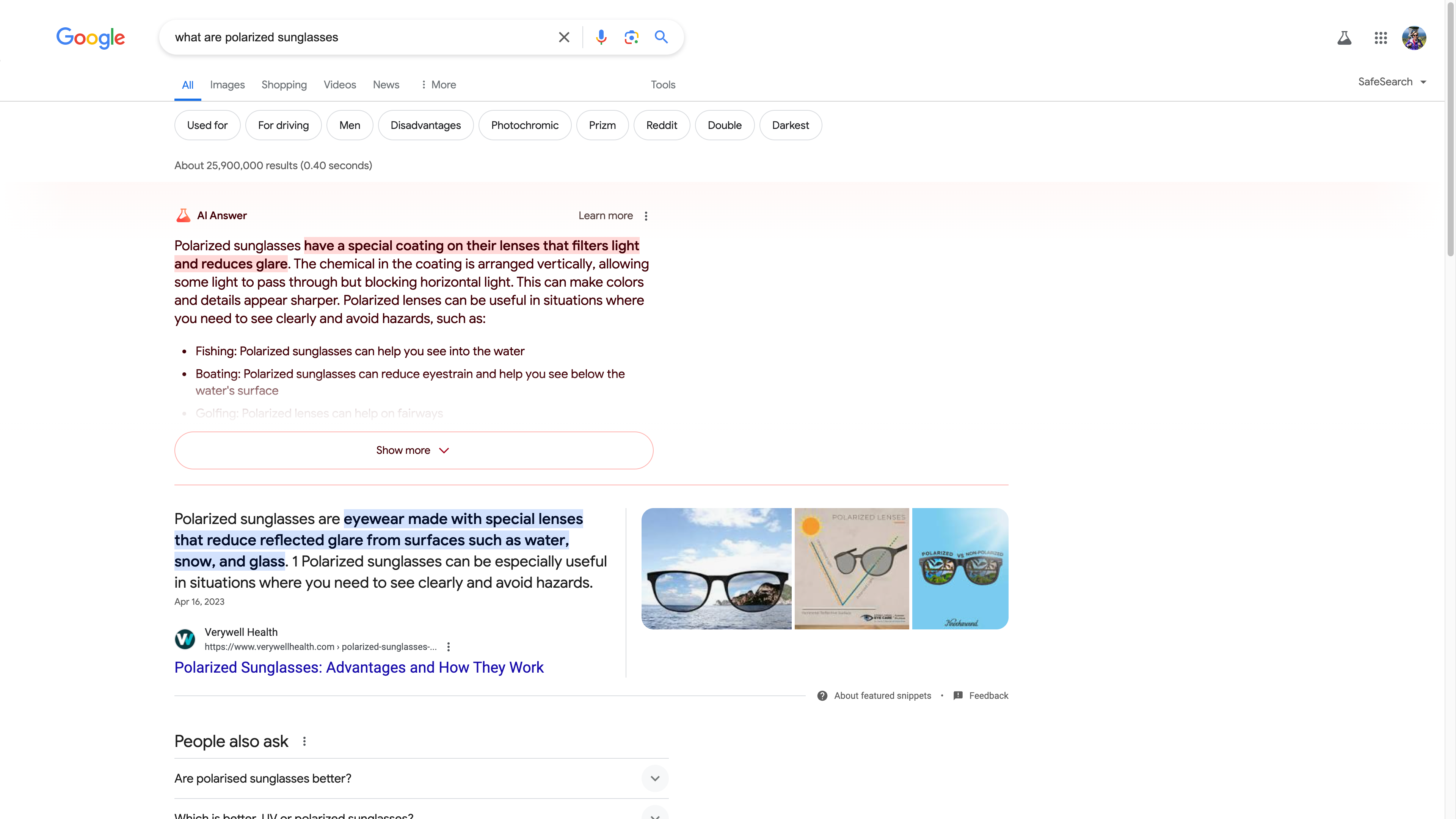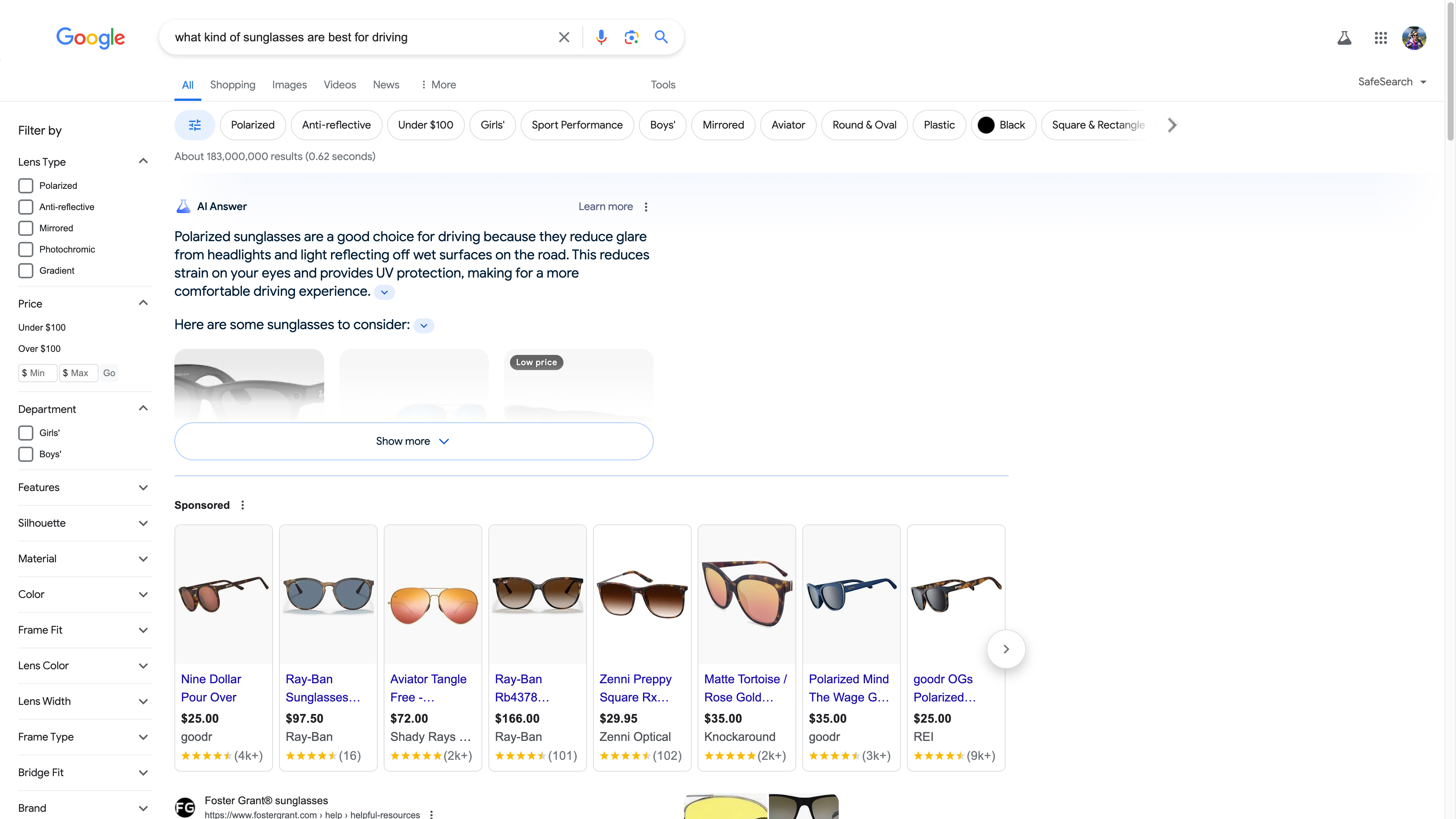Industry Trends
Search

Written By
Wray Ward
Editor’s note: On May 14, 2024, Google began rolling out AI Overviews (formerly known as Search Generative Experience) to all users in the U.S., with more countries to follow. Google has positioned the rollout as a continuation of its recent efforts to enhance the search experience through AI-powered features. With AI Overviews, Google aims to provide users with concise, multi-source answers to their queries while driving more clicks to a diverse range of websites.
While this development may pose challenges for marketers aiming to maintain brand visibility in organic search results, it also presents opportunities for those who adapt their content strategy to prioritize unique, high-quality content that addresses users' evolving needs and preferences. As the search landscape shifts, marketers must stay informed and remain patient. The likely winners will be those who create content that offers value beyond what AI-generated overviews can provide. (Last updated May 24, 2024)
You’ve likely been searching and getting your answers from artificial intelligence for years (think: featured snippets). It’s also likely that because you’re reading this article, you’ve heard of Google’s Search Generative Experience. These AI-generated overviews are just the beginning of a huge shift in the organic search landscape.
What is Google Search Generative Experience?
In short, Search Generative Experience is an initiative from Google to make search results more efficient and to encourage user interaction using AI-powered snapshots that can answer descriptive queries.
Googe’s introduction of AI-powered search is intended to be a positive tool to help users explore the web with more ease and efficiency. But these changes to the search results as we’ve known them pose a challenge to marketers who want their brand to remain competitive on search engine results pages.
How Google SGE Works
While SGE is making huge waves in the search community, it isn’t the first example of AI powering search results. Machine-learning algorithms have been part of Google Search since the mid-2000s. In 2014, the featured snippet took Search a step further, giving users who phrase their search as a question a webpage excerpt that succinctly answers that question. The featured snippet is usually at the top of the search results in what SEO professionals call position zero.
In 2024, consider SGE an extension of Google’s featured snippets. While you may not think of featured snippets as an output of AI, they are similar to SGE in that certain search queries produce an excerpt of text taken from a source that the algorithm deems best at answering a specific query.
One main difference here, however, is that rather than pulling a result from a single source, the SGE output synthesizes a range of results. Google SGE uses AI to serve up a response that gives users a succinct answer based on multiple sources. These AI-generated snapshots connect to the user’s search intent and can pull together cohesive responses with key information and jumping-off points with links for users who want to learn more.
How to Access Google SGE
As of April 2024, SGE is still in the experimental phase. That said, users can sign up to join the waitlist by going to Google Search Labs.
(If you’ve already seen and used SGE but do not work predominantly in SEO, you may be scratching your head. In early 2024, Google started testing AI-generated overviews for a small percentage of users in the United States who had not opted into the SGE labs feature — part of an effort to get feedback from users who had not previously signed up for SGE in Search Labs.)
Benefits and Drawbacks of Google SGE
We’ve been using SGE since June 2023. In almost a year of real-world testing, we’ve noticed pros and cons, as with most new technology. But more often than not, SGE has benefits.
Most of the time, the helpfulness of SGE depends on the query type:
We like the synopsis of different sources with links for informational queries.
The AI-generated snapshots are easy to digest.
We appreciate the opt-in feature (“show more”) in place of a massive interface that takes ages to scroll.
With that being said, SGE is not without its faults. Google’s experiment has faced a few criticisms including:
Redundancy
References to low-quality sources
Factual inaccuracies
Biases
SGE is promising but faces a long road considering that different types of queries bring such varying results today.
What does Google SGE mean for search engine optimization?
The launch of SGE in May 2023 caused panic in the SEO community. Ranking on the first page of SERPs is already a highly competitive aim, and with a giant, AI-generated box taking up so much precious organic real estate, the uphill battle appeared steeper than ever.
But maybe the current state of SEO is not so different after all. Links to sources that Google uses to generate answers are still present. It’s likely true that AI-generated answers will result in lower click-through rates, but how different is this from the zero-click content that SEO pros have dealt with since the launch of the featured snippet a decade ago?
